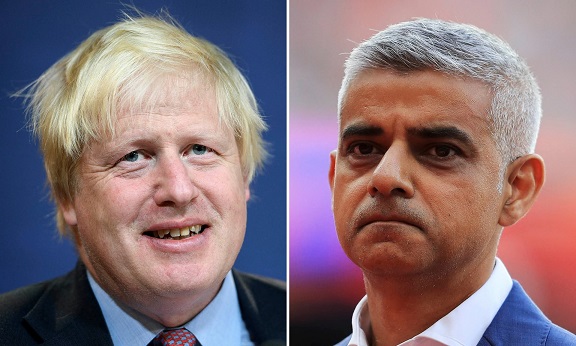Heatherwick won the design competition for the bridge a few months after designing the Olympic torch for the London Games, winning the backing of Johnson and George Osborne, the then chancellor, who committed £60m of public money to the scheme. The rest was intended to come from corporate donations, but the trust failed to raise the private money it needed. It secured only £69m in private pledges, leaving a gap of at least £70m, with no new pledges obtained since August 2016.
Against that backdrop, Davies warned in January that the project faced many challenges that needed to be resolved before construction could begin, including securing final planning consents for the south end of the bridge near Waterloo, securing a guarantee from London authorities for future maintenance costs and raising more private money.
Khan, meanwhile, asked the former Commons public accounts committee chair Margaret Hodge to investigate whether the bridge still represented value for public money. Her report, published in April, recommended that the plan be scrapped. She pointed to multiple failings and argued that the business case for the bridge was “incredibly weak” and based on unconvincing evidence, and said it had been given special treatment under the support of Johnson as mayor.
“What started life as a project costing an estimated £60m is likely to end up costing more than £200m,” Hodge wrote.
The £37m spent on the bridge included direct grants of about £26m from the Department for Transport (DfT) and about £11m in services in kind from Transport for London, of which £8.4m was spent with engineering company Arup.
Four months later, Khan wrote to Davies announcing he would not provide the financial guarantees needed for construction to begin, effectively killing off the scheme. Lumley said in April that decision was “absolutely shattering, devastating”, adding that she was disappointed that the project had become politicised.
Kate Hoey, the MP for Vauxhall, and the councillors Jennie Mosley and Kevin Craig, who campaigned with the local community against the bridge, said the costs to the public purse were in the sphere of £50m. The higher figure, they said, came from the government underwriting the cancellation costs on the bridge, which is thought to be a further £15m on top of the £37m.
They said they would be seeking a full public inquiry and “accountability for the garden bridge trustees in respect of lost taxpayers’ money”.
The London Evening Standard, edited by Osborne, blamed Khan for the collapse of the project on Monday. The bridge, the newspaper said, “was a brilliant and imaginative plan to put the river centre-stage in London, designed by one of the most distinguished contemporary British architects, Thomas Heatherwick, and it will not now be realised, for what looks like nakedly political reasons” [see footnote].
Heatherwick struck a more rueful note. In a statement he said: “London needs new bridges and unexpected new public places. The garden bridge has not found its right moment, but I hope one day it will and that London continues to be open to ideas that make life here better.”

